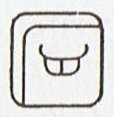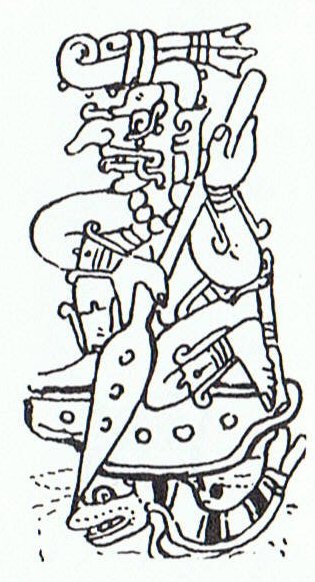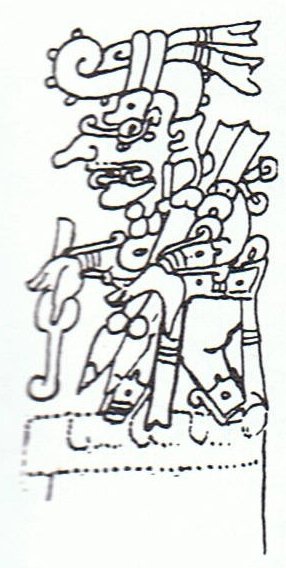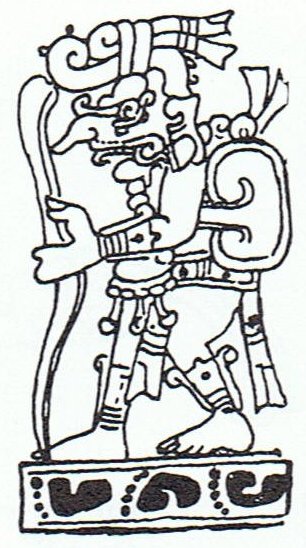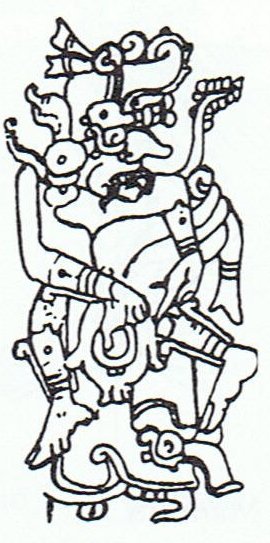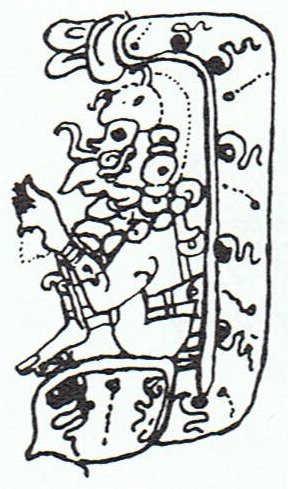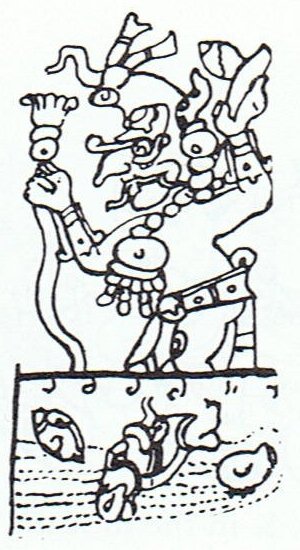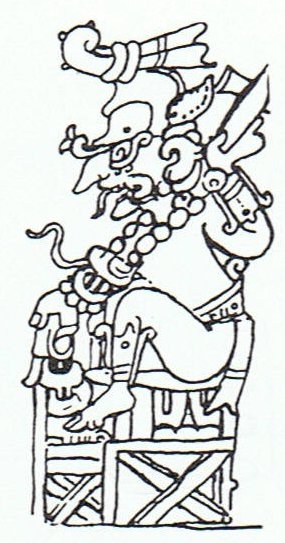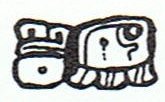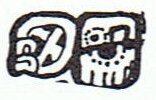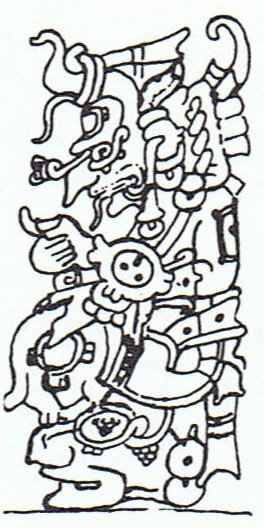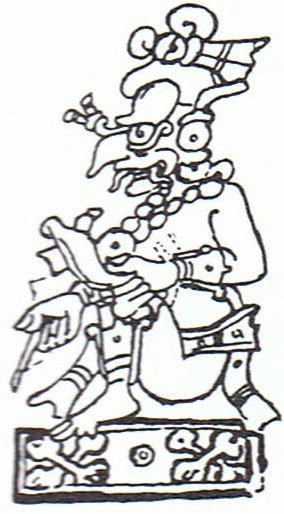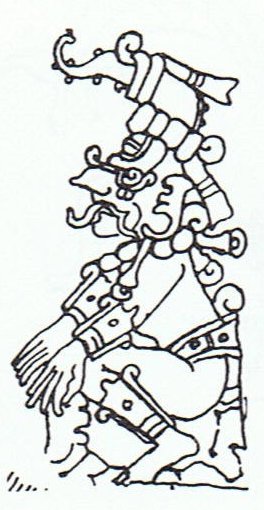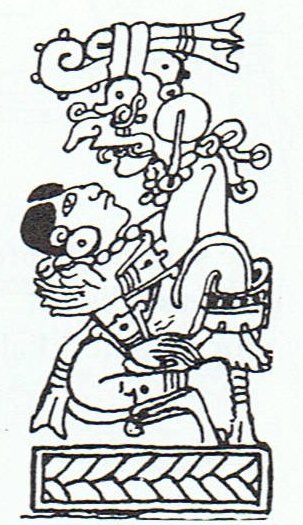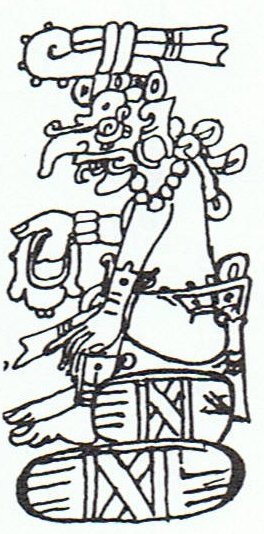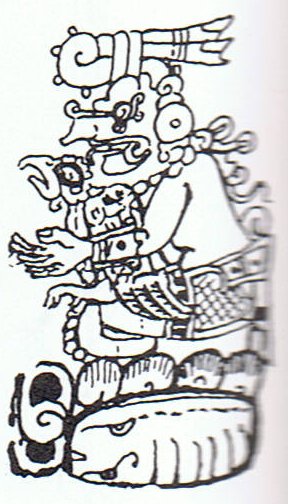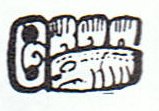|
TRANSLATIONS
The following page maybe should have been inserted at hau tea rather than at henua because I guess ik and hau tea have much in common. On the other hand it felt necessary to take the chance of using the information already here:
The paddle and the corresponding objects in 'air' and 'earth' are 'staffs', presumably alluding to pushing sky up. The other 10 'Rain God' pictures have no such 'staffs'. The stem of the water lily in the 6th position is no stiff object:
The paddle also alludes to the 'tree'. It is not held straight up (and it shouldn't), and there are 3 'bolts' to indicate the 3 sun god positions in front of the 'paddle'. The form of the canoe is equal to the main part of the te sign. The 'paddle' is - it appears - joined to the 'canoe' at midsummer, and in station 4 it is hard to perceive what is 'Rain God' and what is 'tree'. Counting 'bolts' we have 3 (visible) on the paddle + 4 (visible) on the canoe = 7. But there also ought to be one behind the paddle on the canoe. And then his left foot is hiding the last 'bolt' of the canoe. Maybe his toe nail is meant to illustrate this. 7 + 1 + 1 = 9. The 'Rain God' has 9 'lives' like the cat, but the last 2 of them he is living on overtime. The other 13 - 9 = 4 stations are of another character:
The common trait is immediately visible: the prominent hands. The number of fingers must be 50 (there are two persons in location 11). Number 10 could be the 'monkey':
11 could be 'grass' (the female 'mat') or 'broom' (the male 'staff'). In 12 we recognize 'reed', which also Barthel could read in this picture. 13 is more difficult. The eagle is seen in its glyph, and the 'Rain God' could be the 'magician'. If the 'buzzard' also is to be incorporated (which is reasonable because we have been used to triplets all the way up to this station), then he must be the bird the 'Rain God' is holding. All 6 Aztec (and Mayan) 'earth in Sky' (redmarked) positions perhaps appear in the 'Rain God' residences beyond the first 9. The 'Rain God' therefore is in 'earth on Earth' in his 9 first residences. The 'sea-dragon' is found below his canoe in his 1st residence:
In his 2nd residence he surely visits Ik. Then it becomes more difficult. The 3rd residence ought to be 'earth' (and likewise the 5th residence). The serpent is down in earth and therefore should represent the 5th residence. 'House' (or 'night') and 'lizard' (or 'corn') could then be the 3rd and 4th residences. The differences between the Aztec and Mayan ideas regarding the 3rd and 4th residences are evident, which makes it possible to accept the proposition that the 3rd and 4th residences indeed correspond to the 2nd and 3rd days. To look at the Milky Way you must get out in the night. And the abrupt 'head off' leads to a position down in the earth for the maize corn being planted. But that would lead us to the 4th and 5th residences, not to the 3rd and 4th. I must be travelling down the wrong path. Once again: The first 3 residences carry the sun god up, up, up. Then comes the inevitable turning point, and he must go down, down, down. The same residences should return in reversed order. Why depict them more than once? Let us instead look at what comes beyond:
And then it fits: Akbal (night) occurs in 7. The 'corn' is the head of the 'Rain God' in 8. The underground residence in number 9 is the abode of the serpent. We have succeeded, I think, to join the residences of the 'Rain God' to the day names. |
||||||||||||||||||||||||||||||||||||||||||||||||||||||||||||||||||||||||||||||||||||||||||||||||||||||||||||||||||||||
